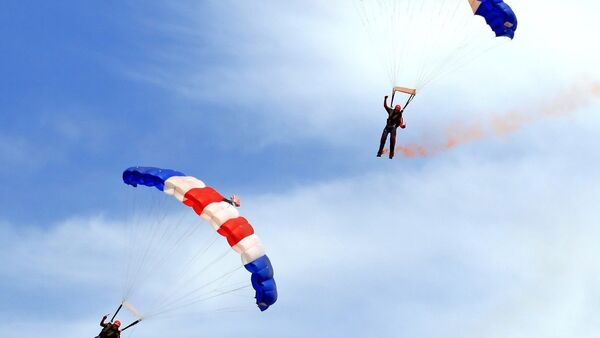Ripping it up on the pond on a canopy piloting jump. pic.twitter.com/UBh9YBJG64
— Alastair Macartney (@AlMacartney) April 18, 2016
For swooper Jeannie Bartholomew, her first thought when she jumps out of a plane is, quite reasonably, to deploy her parachute. The next thought — and perhaps a crazier one — is to spin 450 degrees head over heels amongst the clouds.
"There's nothing compared to diving your parachute at the ground, going 100 miles per hour and putting your canopy down exactly where you want," Bartholomew told Wired.
"We're gonna be hurt, or worse," she says after admitting she and her husband have broken feet, toes, hands, ribs and fingers, tearing ligaments and damaging knees.
The prime objective in canopy jumping — also known as swooping — is to fall from the sky as fast as possible. Competitors in the sport, like Jeannie and Curt Bartholomew head to altitudes of 5,500 feet to deploy a 64 square foot parachute to reach speeds between 80 and 100 miles per hour before hitting the ground.
That sounds high — but not when skydivers jump from 13,000 feet with a parachute four times the size as one used by a swooper.
Canopy piloting may still be niche — but its growing in popularity in the skydiving world, with speed, distance and accuracy being the essence of the sport.


